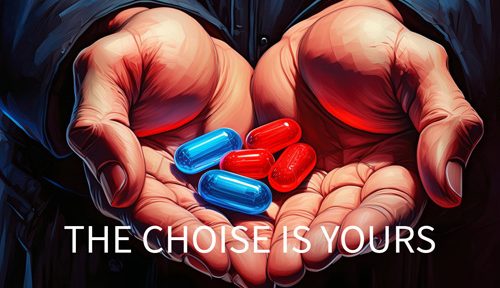The Dopamine Trap: How Modern Life Hijacks Your Motivation
Discover how dopamine, the brain’s motivation molecule, impacts your focus, productivity, and decisions. Learn to break free from the dopamine trap, reduce distractions, and reclaim your motivation with science-backed strategies.
Have you ever wondered why you can’t stop scrolling through social media, even when you know you should be doing something else? Or why binge-watching your favorite show feels so much more appealing than tackling that big project?
You’re not lazy. Your brain is just doing exactly what it’s designed to do—seek rewards, avoid discomfort, and chase that next hit of dopamine.
Dopamine, often called the “motivation molecule,” is the unsung hero (and occasional villain) behind your productivity, focus, and sense of pleasure. But here’s where it gets tricky: dopamine isn’t really about enjoying the reward; it’s about craving it. That craving is what drives us to act, often impulsively, in ways we barely notice.
And in the modern world? The system is rigged. Social media, streaming platforms, notifications—they’re all competing to hijack your brain’s natural chemistry, leaving you spinning in a loop of distraction and dissatisfaction.
Let’s dig deeper. Not to blame your phone or the algorithms, but to understand what’s really happening—and how you can reclaim control.
What Is Dopamine?
Dopamine is a neurotransmitter, which means it’s a chemical messenger that carries signals between brain cells. It’s produced in several areas of the brain, most notably the ventral tegmental area (VTA) and the substantia nigra. From there, it travels to other parts of the brain, such as the prefrontal cortex (responsible for decision-making) and the nucleus accumbens (the brain’s reward center).
Dopamine is often associated with pleasure, but that’s only part of the story. Its primary role is to drive behavior by creating a sense of wanting or desire. For example, when you see a delicious slice of cake or get a notification on your phone, dopamine spikes in anticipation of the reward. This motivates you to take action—like eating the cake or checking the notification.
The Dopamine Loop: Cue, Craving, and Reward
The dopamine system operates in a loop, often referred to as the reward circuit. It consists of three main components:
Cue: This is the trigger that starts the dopamine loop. It could be the sight of a notification, the smell of coffee, or even a particular time of day.
Craving: Once the cue is registered, dopamine creates a sense of anticipation or desire. You feel compelled to act to obtain the reward.
Reward: When you complete the action, like drinking the coffee or opening the notification, your brain releases another hit of dopamine as a reward. This reinforces the behavior, making it more likely you’ll repeat it in the future.
Over time, this loop becomes automatic, forming habits—both good and bad.
Why Modern Life Feels Like a Trap
The digital world is designed to overfeed your dopamine system.
- Social media? A jackpot of likes and comments, perfectly spaced to keep you hooked.
- Streaming services? Autoplay ensures you never have to make a decision.
- Junk food? Engineered to deliver maximum reward with minimal effort.
This constant stimulation rewires your brain, making it harder to focus on anything that doesn’t deliver immediate gratification. The big project at work? It doesn’t stand a chance. Your brain has been trained to crave easy wins, not meaningful progress.
And here’s the kicker: over time, these dopamine hits lose their power. The more you indulge, the less satisfying it becomes, leaving you chasing bigger hits or feeling utterly unmotivated.
But don’t despair—there’s a way out.
The Science of Dopamine and Focus
Dopamine doesn’t just influence pleasure; it also plays a key role in focus and attention. Research shows that dopamine levels in the prefrontal cortex are directly linked to your ability to stay on task. When dopamine levels are balanced, you’re more likely to concentrate and resist distractions. But when your dopamine system is overstimulated or depleted, your ability to focus suffers.
For example:
Overstimulation: Constantly checking your phone or switching between tasks floods your brain with dopamine. This makes it harder to sustain attention because your brain starts expecting frequent rewards.
Depletion: After prolonged overstimulation, your brain’s dopamine receptors can become desensitized. This leads to a lack of motivation and an inability to feel satisfaction from activities that once brought you joy.
Breaking Free: How to Reclaim Your Focus
The goal isn’t to eliminate dopamine (you can’t). It’s to recalibrate your brain so it craves what truly matters.
Here’s how:
- Spot the Triggers
Pay attention to what pulls you into the dopamine trap. Is it your phone? Junk food? Netflix? Write them down. Awareness is the first step. - Rebuild the Loop
Replace cheap dopamine hits with activities that align with your goals.- Instead of scrolling, spend five minutes journaling.
- Replace a streaming binge with a walk or workout.
- Trade the dopamine of fast food for the satisfaction of cooking something nourishing.
- Detox, Even Briefly
Try a “dopamine detox” for a day or two. Limit your exposure to instant-gratification activities. It won’t be easy at first, but your brain will thank you. - Celebrate Small Wins
Dopamine loves progress, not perfection. Break big tasks into smaller steps, and celebrate every milestone. Finished a chapter? Take a moment to enjoy the accomplishment. - Embrace Deep Work
Multitasking feels productive but dilutes focus. Commit to one task at a time, immersing yourself fully. It’s hard at first but deeply satisfying once you’re in the flow. - Move Your Body
Physical activity boosts dopamine naturally. A brisk walk, yoga session, or even dancing around your living room can reset your brain.
Harnessing Dopamine for Productivity
Dopamine isn’t the enemy; it’s a tool. When used wisely, it can help you stay motivated and productive. Here are some science-backed strategies to harness dopamine effectively:
- Break Big Goals into Small Wins: Dopamine is released not just when you achieve a goal but also when you make progress. Breaking large tasks into smaller, manageable steps allows you to experience frequent dopamine hits, keeping you motivated
- Create a Reward System: Pair effortful tasks with small rewards. For example, after completing a focused work session, reward yourself with a 10-minute break or a favourite snack.
- Use Visual Cues: Seeing your progress can trigger dopamine. Try using a checklist or habit tracker to visually represent your achievements.
- Focus on One Task at a Time: Multitasking dilutes dopamine’s impact. Deep work—immersing yourself in a single task—maximizes dopamine’s motivational effects.
- Incorporate Movement: Exercise boosts dopamine levels, improving focus and mood. Even a 10-minute walk can provide a significant mental reset.
Rewiring Your Brain for Focus
Your brain’s neural pathways are shaped by repetition. By consistently choosing activities that align with your long-term goals, you can rewire your brain to crave productive habits instead of instant gratification.
Practice Mindfulness: Meditation trains your brain to resist distractions and focus on the present moment, reducing impulsive dopamine-driven behaviors.
Prioritize Sleep: Dopamine production is closely linked to sleep. Aim for 7-9 hours of quality rest each night to maintain optimal brain function.
Fuel Your Brain: Certain foods, like bananas, nuts, and fish, support dopamine production. A balanced diet keeps your neurotransmitters functioning efficiently.
The Big Question: Is Dopamine Helping or Hurting You?
Dopamine isn’t the enemy. It’s a tool. The real question is: are you using it to fuel your dreams, or is it using you?
You don’t have to stay trapped in the cycle of distraction. By understanding the mechanics of dopamine and making intentional choices, you can reclaim your focus, rebuild your motivation, and start creating the life you truly want.
So, what will you do today? Scroll for another hit—or take one small step toward something real?
Your brain, your choice.
Want more insights like this? Subscribe to our newsletter for practical, science-backed tips to master your mind and unlock your potential.




